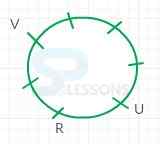 Introduction
Introduction
This area of analytical thinking includes problems put as riddles including certain number of things, be it persons or things. The competitor is required to break down the given data, shorten it in a reasonable frame and answer the problems.
Reasoning Ability -BANKING|SSC|RAILWAYS|INSURANCE|RECRUITMENT EXAMS – EBOOKS
 Concept
Concept
The questions on puzzle test might be any of the accompanying sorts:-
- 1. Classification type problems.
2. Seating/ Placing arrangements.
3. Comparison type problems.
4. Sequential Order of things.
5. Selection based on given conditions.
6. Family-based questions.
7. Jumbled questions.
 Samples
Samples
1: Study the following information carefully and answer the questions that follows: (M.B.A. 2006; R.R.B. 2005)
i) Five friends, A, B, C, D and E travelled to five different cities of Chennai, Kolkata, Delhi, Bangalore and Hyderabad by different modes of transport of Bus, Train, Aeroplane, Car and Boat from Mumbai.
ii) The person who travelled to Delhi did not travel by boat.
iii) C went to Bangalore by car and B went to Kolkata by aeroplane
iv) D travelled by boat whereas E travelled by train.
v) Mumbai is not connected by bus to Delhi and Chennai.
i. Who among the following travelled to Delhi
- a. C
b. D
c. E
d. Data inadequate
e. None of these
- a. Delhi-Bus
b. Kolkata- Aeroplane
c. Bangalore- Car
d. Chennai-boat
e. Hyderabad- bus
- a. Delhi-Bus
b. Chennai-Bus
c. Chennai- Boat
d. Data inadequate
e. None of these
- a. A- Bus
b. B- Aeroplane
c. C- Car
d. D- Boat
e. E- Aeroplane
- a. bus
b. train
c. aeroplane
d. car
e. boat
- a. P is the fourth to the right of T.
b. V is to the immediate right of S .
c. U is the third to the right of S .
d. Q is the immediate left of S .
e. None of these
- a. R is fourth to left of Q .
b. P is to the immediate right of V.
c. S is second to the left of T.
d. Q is second to the right of V.
e. None of these
- a. QT
b. RP
c. VS
d. SV
e None of these
- a. Fourth to the right of S.
b. To the immediate left of R.
c. Between P and T.
d. To the immediate right of P.
e. None of these.
- a. Gopal
b. Ram
c. Alka
d. None of these
- a. Alka
b. Mala
c. Kapil
d. None of these
- a. Physics
b. English
c. Either Physics or English
d. Data inadequate
e. None of these
- a. Monday
b. Wednesday
c. Thursday
d. Data inadequate
e. None of these
- a. Chemistry
b. English
c. Biology
d. Data inadequate
e. None of these
- a. P
b. R
c. S
d. Data inadequate
e. None of these
- a. QU
b. TU
c. SQ
d. ST
e. None of the above







